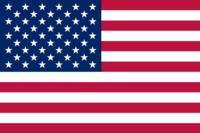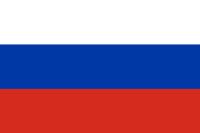
Coating for windows to block heat-generating UV and infrared light
2024-04-22 08:45
Researchers at the University of Notre Dame develop a new window coating to block heat-generating ultraviolet and infrared light and allow for visible light, regardless of the sun’s angle.
The research proves that the developed window coating maintains its functionality and efficiency regardless of the position of the sun, both maximising the transmission of visible light and minimising the transmission of heat-generating wavelengths. Source: Adobe.Stock
Windows welcome light into interior spaces, but they also bring in unwanted heat. The new window coating blocks heat-generating ultraviolet and infrared light and lets through visible light. The coating can be incorporated onto existing windows or automobiles. It can reduce air-conditioning cooling costs by more than one-third in hot climates.
“The angle between the sunshine and your window is always changing,” said Tengfei Luo, the Dorini family professor for Energy Studies at the University of Notre Dame and the lead of the study. “Our coating maintains functionality and efficiency whatever the sun’s position in the sky.” Window coatings used in many recent studies are optimized for light that enters a room at a 90-degree angle. Yet at noon, often the hottest time of the day, the sun’s rays enter vertically installed windows at oblique angles.
Luo and his postdoctoral associate Seongmin Kim previously fabricated a transparent window coating by stacking ultra-thin layers of silica, alumina and titanium oxide on a glass base. A micrometer-thick silicon polymer was added to enhance the structure’s cooling power by reflecting thermal radiation through the atmospheric window and into outer space.
“Additional optimization of the order of the layers was necessary to ensure the coating would accommodate multiple angles of solar light. However, a trial-and-error approach was not practical, given the immense number of possible combinations,” continued Luo.
Maintains transparency regardless of sun’s angle
To shuffle the layers into an optimal configuration, the transmission of visible light is maximized while minimizing the passage of heat-producing wavelengths. The team used quantum computing, or more specifically, quantum annealing, and validated their results experimentally. “Like polarized sunglasses, our coating lessens the intensity of incoming light, but, unlike sunglasses, our coating remains clear and effective even when you tilt it at different angles,” added Luo.
Their model produced a coating that both maintained transparency and reduced temperature by 5.4 to 7.2 degrees Celsius in a model room, even when light was transmitted in a broad range of angles. The active learning and quantum computing scheme developed to create this coating can be used to design of a broad range of materials with complex properties.
More Hzinfo
- Chitosan-based Bioadhesives: Strong Bonds for Biomedical Applications
- Chitosan-based bioadhesives show great potential in medical technology, providing safe applications for wound healing and tissue regeneration.
-
2024-11-09
- Graco Inc. Completes Acquisition of Corob S.p.A.
- Adds a global manufacturer of dispensing and mixing solutions for paints and coatings.
-
2024-11-09
- Recommended products: Hydroxylamine-based phenol-free antioxidant 420 with strong color protection
- Revonox 420 is a hydroxylamine-based phenol-free antioxidant with good color protection, high compatibility, low volatility and stable high-temperature storage.
-
2024-11-08


 English
English 简体中文
简体中文 Русский
Русский إنجليزي
إنجليزي